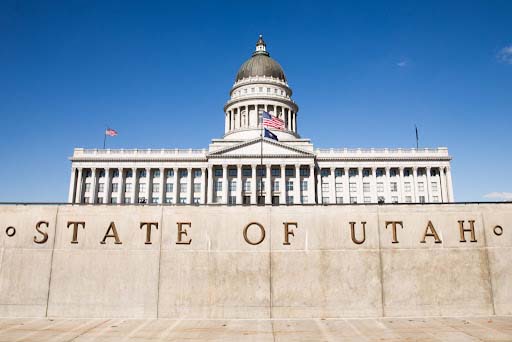Utah Democratic leaders are condemning congressional district maps approved by the Utah Legislature as blatant examples of political gerrymandering.
SALT LAKE CITY – The second special session the 64th Utah Legislature is over, but accusations by Democratic lawmakers of political gerrymandering are still echoing in the halls of the state’s capitol building.
That heated rhetoric came after the GOP majorities in the Utah House and Senate approved a controversial congressional district map late Wednesday.
That map, developed by the members of the Legislative Redistricting Committee, assigns a portion of Salt Lake County into each of Utah’s four congressional districts, thus diluting the influence of its mostly liberal voters.
Democrats’ effort to replace that congressional district map with one drafted by the Utah Independent Redistricting Commission (UIRC) were quickly stymied by majority Republicans.
The lopsided vote approving the controversial congressional district map was 50 to 22 in the Utah House on Tuesday and 21 to 7 in the Senate on Wednesday.
Rep. Brian King (D-Salt Lake City), the minority leader in the Utah House, complained that debate on alternative district maps was cut off prematurely.
“I was troubled to see debate cut off before all three Utah Independent Redistricting Commission maps were presented by the Democrats for debate,” King explained. “Those UIRC maps were fairer to both urban and rural Utahns.”
But UIRC member Lyle Hillyard, a former Republican state senator, says that the Democrats are just frustrated because their own attempts to gerrymander the state’s congressional districts were thwarted.
“Most Democrats that I’ve talked to have said ‘we’re 30 percent of the population, so you have to give us one congressional district’,” Hillyard explains.
“When I hear that, I always respond by saying: ‘Isn’t that gerrymandering?’
“To which they usually respond ‘That’s okay as long as it’s for us’.”
Under state Proposition 4, which was narrowly approved by Utah voters in 2018, the once-a-decade process of redrawing statewide political boundaries was intended to be a combined effort by the traditional redistricting committee made up of state lawmakers and an independent panel of appointed citizen representatives.
Ideally, those bodies are required to cooperate to provide a greater degree of transparency and fairness to the redistricting process.
The UIRC was made up of seven appointees representing Democratic, Republican and independent interests.
Republicans were represented by Hillyard and former congressman Rob Bishop. The Democrats appointed former state senator Karen Hale and Christine Durham, who is retired from the state supreme court. The independents on the commission were Jeff Baker, former judge Bill Thorne Jr. and chairman Rex Facer.
Hillyard said the commissions’ work proceeded smoothly as long as they were drawing boundaries for House, Senate and School Board districts. But when their discussions moved to congressional district boundaries, the knives came out.
“At a recent commission meeting, Justice Durham announced that she was not going to vote to approve any congressional map that divided Salt Lake City more than twice and didn’t protect the Salt Lake area,” Hillyard explained. “Baker felt the same way and so did Hale.”
That adamant stand by three commissioners was what motivated Bishop to quit the panel in early November, according to Hillyard.
In his opinion, Hillyard believes that a fair congressional district should be made up of 75 percent urban and 25 percent rural voters.
“I just want each district to have a blend of urban and rural residents,” he adds, “so that anyone elected from that district will have to be aware of both urban and rural issues rather than being totally focused on Salt Lake or Utah counties.”
But Joshua Rush, the communication director for the Utah Democratic Party, called this week’s legislative power play an alarming and un-democratic act by the GOP supermajority.
“These maps are a blatant show of disregard for the people of Utah,” he added.
The congressional district map, along with three others designating boundaries for House, Senate and School Board district, will now be forwarded to the desk of Gov. Spencer Cox for final approval.
Despite demands from Democrats that Cox veto the congressional map, the governor has noted that the legislation passed the Utah House with by veto-proof vote.

